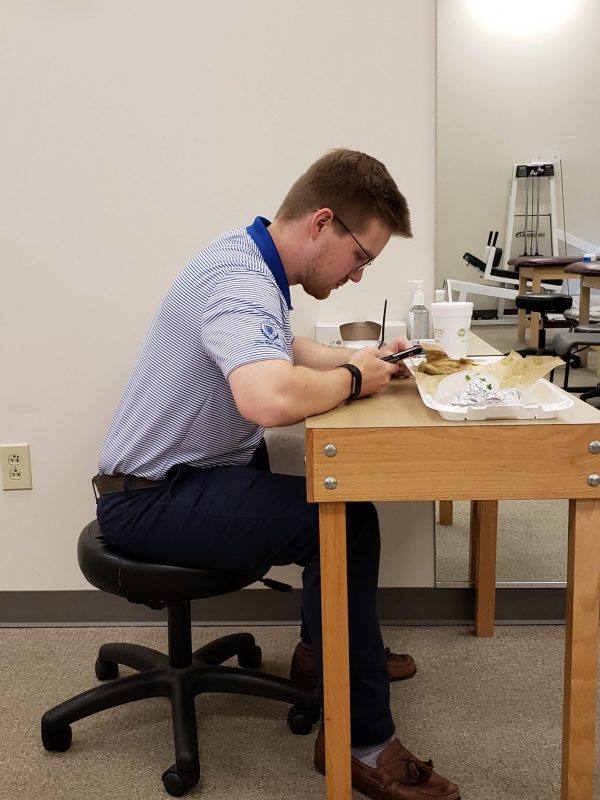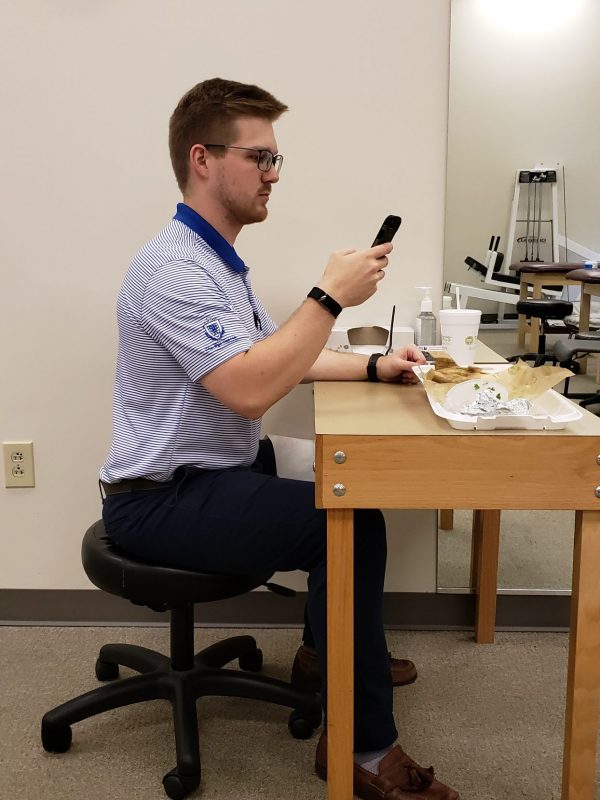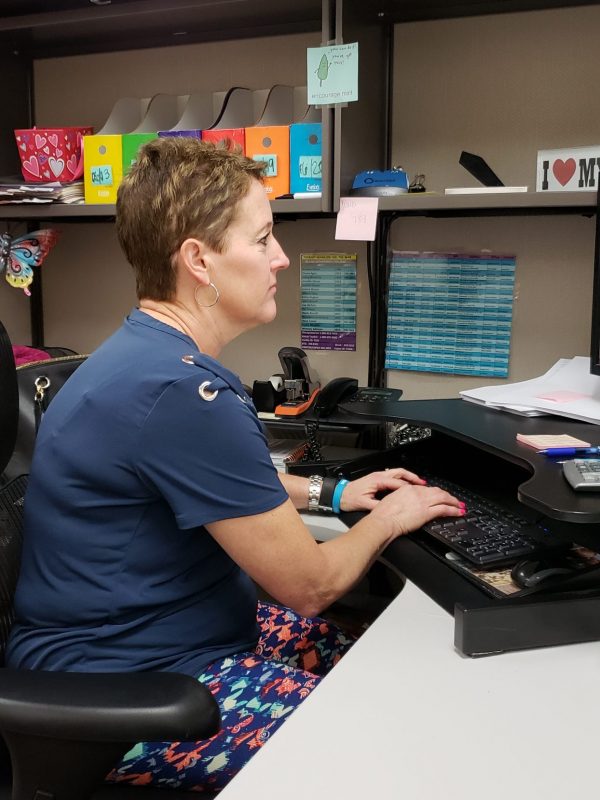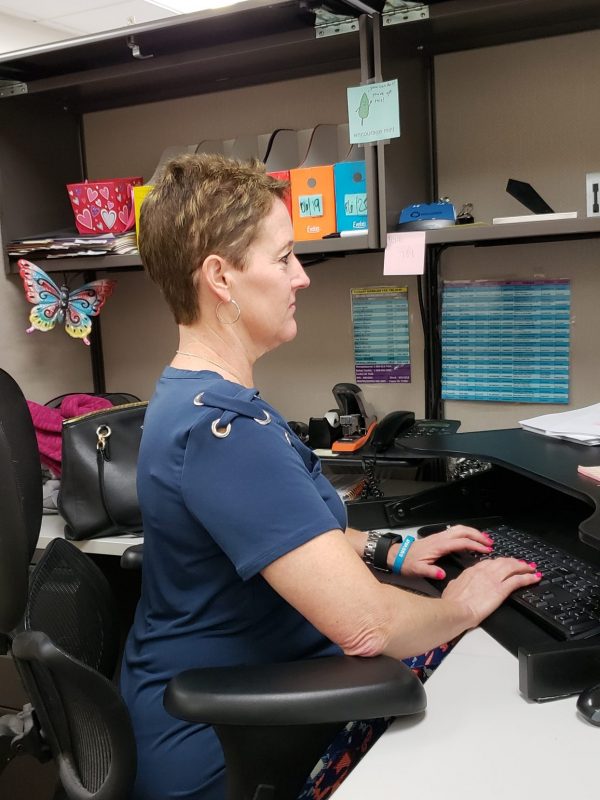Featured Therapist: Nolan Williams, PT, DPT
If you experience neck or back pain while working from home, whether a new problem or a flare up of a previous problem, it’s most likely not a coincidence!
Since the shift to working from home, I have seen an increased incidence of neck and back pain in patients throughout our practice. Upon evaluation, it is discovered that most of these patients have what we would describe a less than ideal “home office” set up. This might include things like working from the kitchen table, couch or even the recliner.
This may sound comfortable, but extensive time spent in these positions can contribute to painful consequences in your neck and back!


Positions of Pain
Whether you realize it or not, when you’re looking at a computer or phone screen over time, your head and neck drift forward and your chin tilts up. This position, called Tech Neck, causes the muscles in the upper part of your neck to shorten, which then can start to cause neck tightness and even headaches. The vertebrae in the middle and lower part of your neck slide or “shear” forward which can place a lot of strain on the discs in your neck. This can compress nerves and cause the pain to radiate into your arm.
When in this position, your shoulders and upper back are going to round forward because all the work you’re doing is in front of you. If you get pain and tightness between your shoulder blades when working, this is probably what’s happening!
Finally, if you’re sitting and working for several hours you’re going to end up “slump sitting” or slouching. This causes strain on the ligaments and muscles that support your lower back and can also put a lot of tension on your lumbar discs. If you feel stiffness in your lower back when you finally stand up, this is likely what’s going on.
Awareness is Key
To help prevent these issues, you need to be aware of your posture! Check out these tips for better posture:
1. Try to keep some arch in your lower back when you’re sitting.
2. Your shoulders need to be pulled back and your ears need to be kept in line with your shoulders.
3. Standing up at least every hour is also helpful to take strain off of your back.


Modify Your Set-Up

When sitting, try to consciously keep both your feet flat on the ground. This will keep your weight evenly distributed and prevent tightness later on. If your feet do not touch the ground, place something under your feet to prop them up.

Screens up! If you are able to, get a monitor stand to raise your screen to eye level. You can even stack some books or a basket below your computer.

Elevate! Mix up your stand-sit positioning. If your desk does not rise up, Again, stack box or basket under your computer so you are able to have the screen at eye-level while working.

Microbreaks: Standing up and stretching for 30-60 seconds at least every hour is helpful to take strain off of your back and freshen up!
Enlist the Help of a PT
If making these changes isn’t enough to make you feel better, that’s where we come in! I’ve helped many, many patients this year modify their home work set ups and improve their overall mobility to make it easier to get into a better posture.
Contact your local TherapySouth clinic to schedule an evaluation and get one step closer to better posture and more productive work that won’t leave you in pain!
Nolan Williams, PT, DPT is the Clinic Director at TherapySouth in Helena, AL. Nolan is a Board Certified Specialists in Orthopedic Physical Therapy and is also a Certified Manual Therapist. He received his B.S. in Biology from Faulkner University in 2006 and then earned his Doctorate of Physical Therapy from the University of Alabama at Birmingham in 2009.







